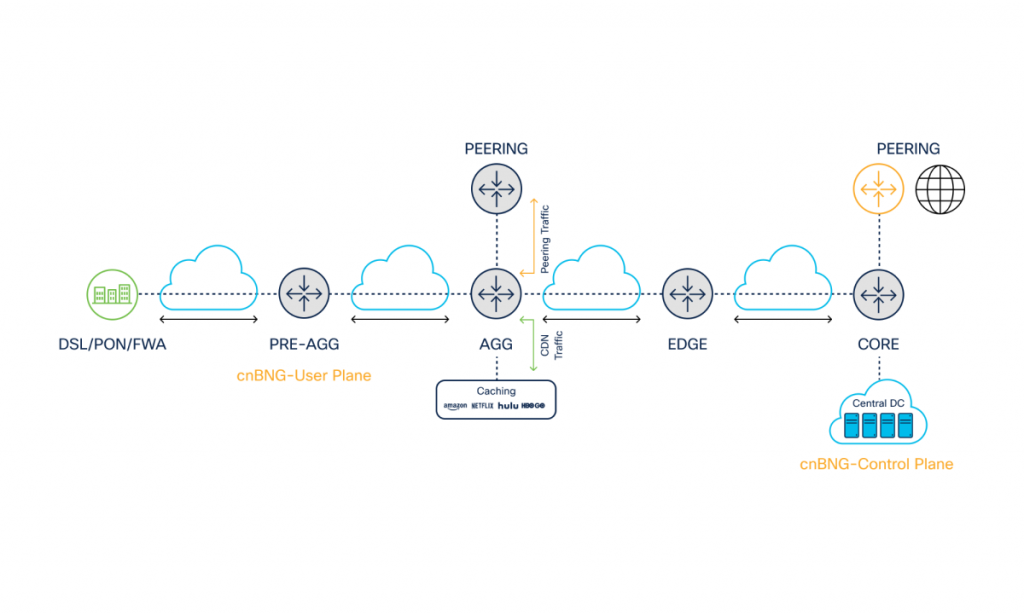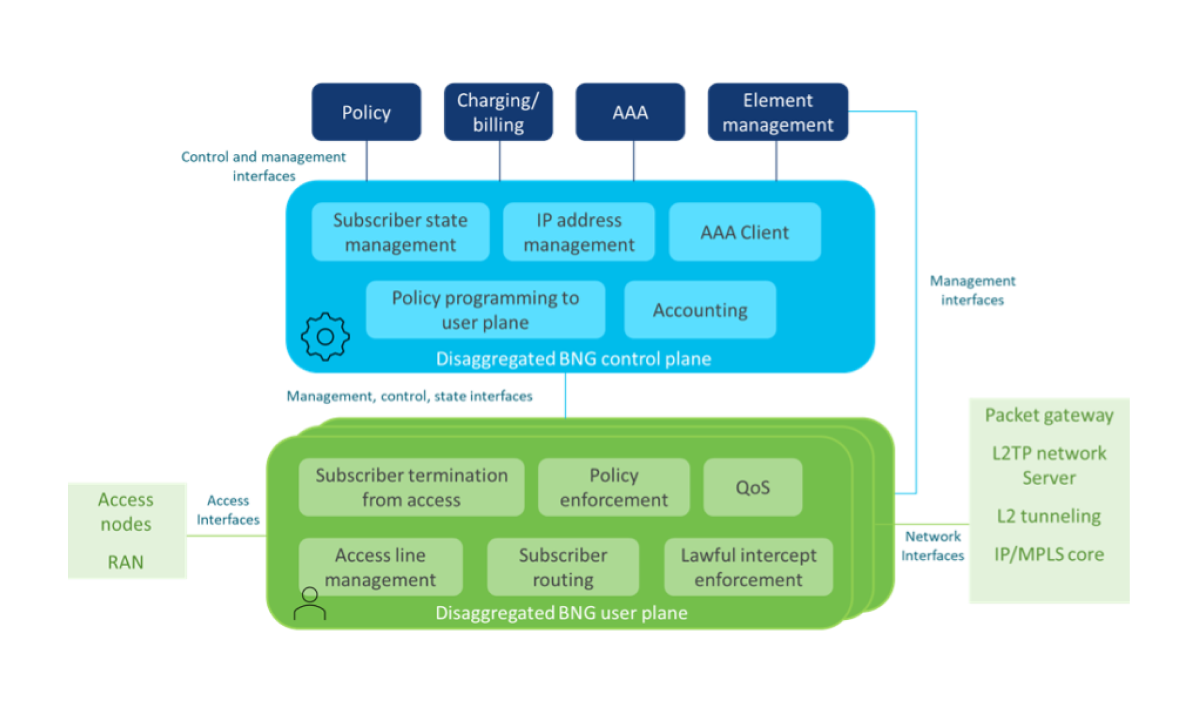































This is Part II of a three-blog series on solutions to overcome challenges associated with bridging the digital divide.
In the previous blog (see Bridging the Digital Divide with Subscriber Edge), we discussed the traditional broadband network design. In this blog, we will focus on a new architecture for broadband networks, and the challenges that they address.
The ability to enable subscriber functions on different layers or devices in the network provides an opportunity to optimally position subscriber edge in the network to help fit economical and user-experience needs. For example, given that video amounts to more than 75% of the volume of total subscriber traffic, flexible termination allows for the efficient offload of video traffic closer to the subscriber through careful placement of content caches and the addition of peering points. Distributed termination of subscribers improves the overall user experience as the traffic follows a more ideal path that optimizes capacity usage and supports lower latency for demanding applications.
With this distributed architecture, communication service providers (CSPs) can save costs by reducing unneeded bandwidth upgrades of the entire network through traffic offload further downstream. However, with more distributed placement of subscriber edge functions using different termination models, CSPs may face challenges with scaling, managing, and operating subscriber services networks.
To solve these challenges, Broadband Forum defined the Control and User Plane Separation (CUPS) model for the Broadband Network Gateway (BNG) in TR-459 (see Figure 1). CUPS enables distribution of user/data planes closer to the subscriber, allowing the control plane function to be centralized. This is a significant change from the traditional BNG architecture-where control plane and user plane functions are tightly integrated and performed by the same device. This new distributed architectural approach takes advantage of CUPS to offer newer broadband services and use cases that are different from traditional offerings.
Centralizing the control plane function helps lower operational costs in a distributed subscriber edge function that can be non-uniform with varying requirements on scalability, form factor, and role.
CUPS also enables new revenue streams or models, which were not possible with the traditional architecture, such as differentiated service plans. For example, service providers can offer a day/night plan, where subscribers are provisioned or moved to a smaller set of user planes during the night for cost savings and potential sustainability benefits.
Customers can also offer tiered plans with Platinum, Gold, and Best-Effort, based on redundancy capabilities to help protect premium subscribers from user plane, access, or site failures. With the control plane no longer tightly integrated with the user plane, and complete visibility of all user planes, CUPS enables higher flexibility for CSPs to seamlessly move subscribers to different nodes without disruption.
 Figure 1. New CUPS architecture view
Figure 1. New CUPS architecture view The latest development by the Broadband Forum is Issue 2 of TR-459 Multi-Service Disaggregated BNG with CUPS specification (see Figure2), which enables improved resiliency, scalability, and faster deployment times to help provide a better end-user experience with a more reliable and consistent service.
 Figure 2. MS-BNG functions separating into control plane and user plane (from BBF TR-459i2)
Figure 2. MS-BNG functions separating into control plane and user plane (from BBF TR-459i2) In the third blog, we will share details on the Cisco Subscriber Edge solution, including the architecture, technical advantages, and customer benefits.
Get started today reimagining your gateway architecture with
Cloud Native Broadband Network Gateway
 Hot Tags :
cloud native
digital divide
Broadband Network Gateway (BNG)
Cisco Subscriber Edge
Control and User Plane Separation (CUPS)
Hot Tags :
cloud native
digital divide
Broadband Network Gateway (BNG)
Cisco Subscriber Edge
Control and User Plane Separation (CUPS)